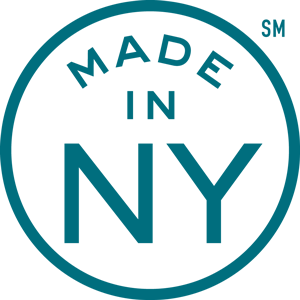
In 2014, Tomorrow Lab partnered with the Copenhagen Institute of Interaction Design (CIID) to provide workshop-driven research to Intel's Design School Network. The project's goal was to identify opportunities to increase adoption of Intel’s Galileo platform in a live-streaming and collaborative way. The Galileo tool is an Arduino-certified board, built on fully open-source hardware with a software environment for advanced compute functionality. Over six weeks, we developed concepts and tools for usage of this platform and conducted workshops and user testing of prototypes with makers, designers, scientists and students in both NYC and Copenhagen.
We began with understanding the Intel Galileo platform goals so that we could create prototypes to test, and a specific template for each concept. This included studying the advantages, disadvantages and targets for the platform; possible analogous products for teardown and comparison; and a layout of a test research template and methods to increase adoption of the product.
Next, we conducted a workshop with Tomorrow Lab and CIID to develop three initial concepts for testing. Once we made prototypes of these three concepts and confirmed that they could be use to augment live collaboration, we integrated students in design-driven programs to conduct the tests and provide feedback on each. Each prototype test identified trends for success and failure with different applications of the platform for us to create recommendations for use and opportunities for marketing. These ideas allowed for easier access to communication tools, peer-to-peer learning, group collaboration, and tool sharing. With the use of Galileo, users could also upload and download content in each concept.
Product Strategy
Interaction Design
Product Architecture

The first concept, the high-res Window to Studio tool, played with the idea of large-scale video communication to encourage teams to collaborate together across the platform when coming up against challenging creative moments. By utilizing multiple 4k LCD screens connected through the Galileo platform, students could walk up at any time and seek assistance from a fellow student either in their program or another across the world!
Because the screens are large, users could use their hands and body language to communicate more freely. However, despite the high-resolution, reading hand-written notes through the screens was difficult. Personal devices and notebooks paired nicely with the platform to encourage additional communication if the reading proved too difficult.
User feedback on how students collaborate provided information that most students interact with each other on site in a studio or lab space. Using a tool such as the Window to Studio would encourage students to seek different outsider feedback. Others prefered available social media or school-sponsored online tools for feedback, and were not drawn to this concept as frequently.
For the Object Matrix concept, we created a prototype of a low-res desk buddy to have next to your computer or work station for a creative communication tool. The Object Matrix employed small images filtered through a 32 x 32 inch pixel to create the outline of a person through a frosted glass display. Each person communicating has their own Galileo-run desk buddy to communicate through, while continuing to share just a screen or attachment for review. This idea then becomes more like a character version of the person providing feedback to the work you are sharing.
Through the use of this tool, each user can maintain their own screen, and reduce the flipping between windows or documents while communicating, and maintains that the reviewer is within earshot and can provide feedback via voice interaction alone in this space.
While this is the most compelling of the concept ideas, and helps users talk openly through a fun device, it is easy to get distracted. By having no eye contact to encourage you to remain engaged, and feedback provided only through reading and voice interaction, timing can be lengthy while making suggested edits or changes.
With the Online Whiteboard concept, we encouraged students to incorporate the Galileo with existing tools such as a Twiddla drawing pad to create a mock-up virtual experience desk crit of a project’s current progress. The audio and visual connection of a classic laptop and Google Hangout made room for more traditional communication tools and comfort.
With the addition of the whiteboard tool, users are encouraged to create a third space for written and sketched critique for review during or after the presentation. This take mirrors the way designers like to receive feedback in person at school or work from their peers or coworkers. By saving and then clearing the whiteboard, either the same user could receive feedback from additional reviewers on the whiteboard for consideration, or even come back to the existing platform after making changes and perform an updated presentation.
We found this concept to be the most fun, but since the whiteboard lays flat in front of one user, it was sometimes hard to see until copied and sent through the Galileo platform. If each user had a whiteboard that were connected, and therefore they could collaborate more easily on the same idea, this concept could be more rewarding.



